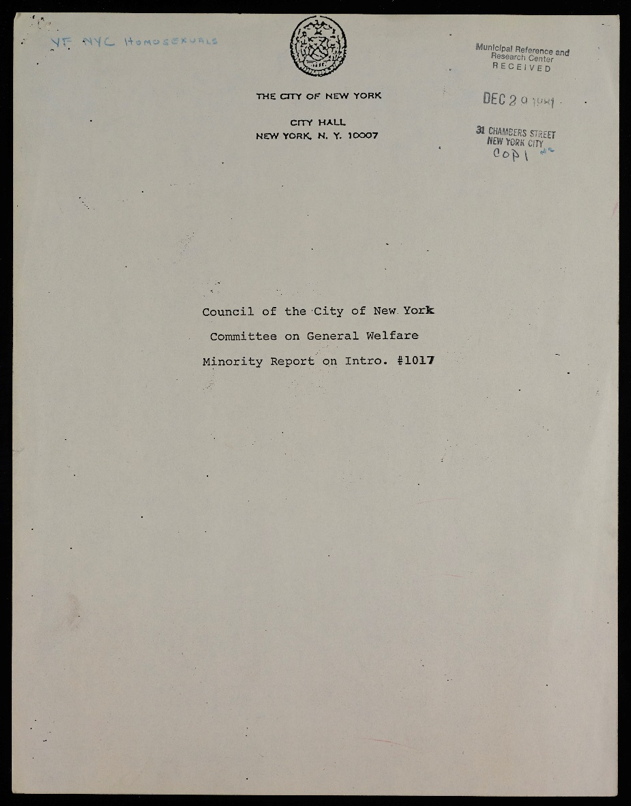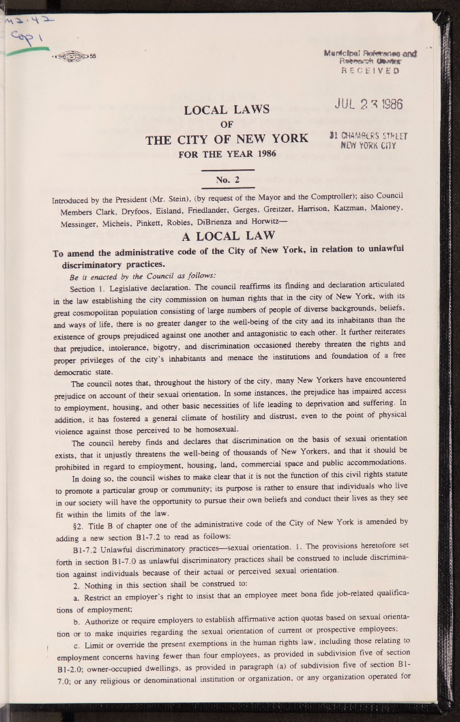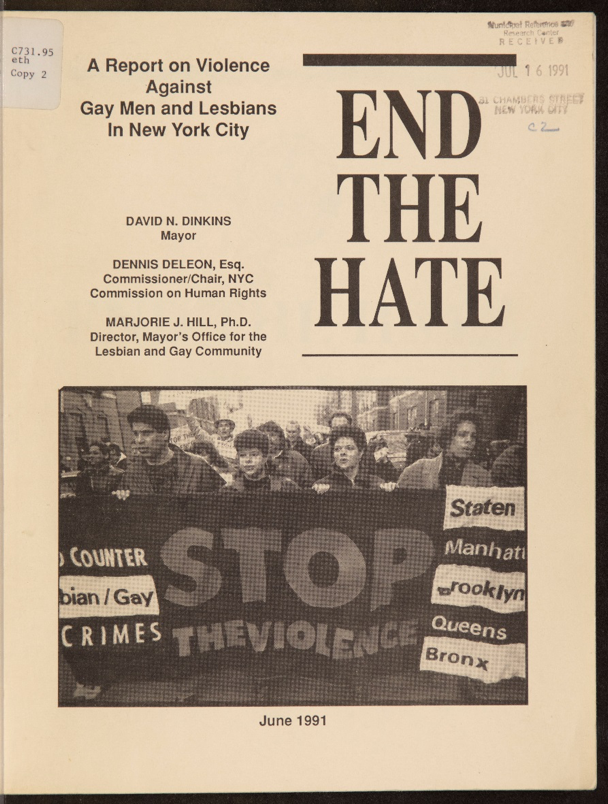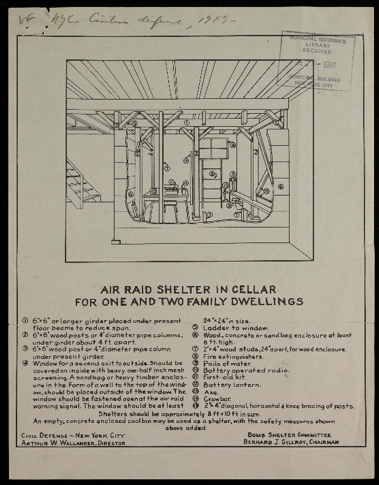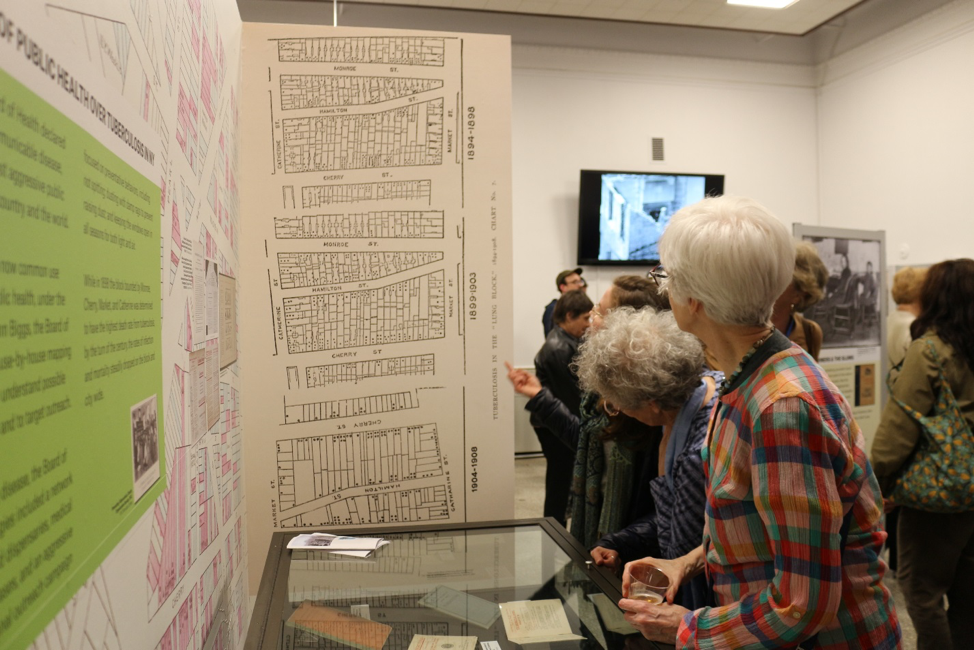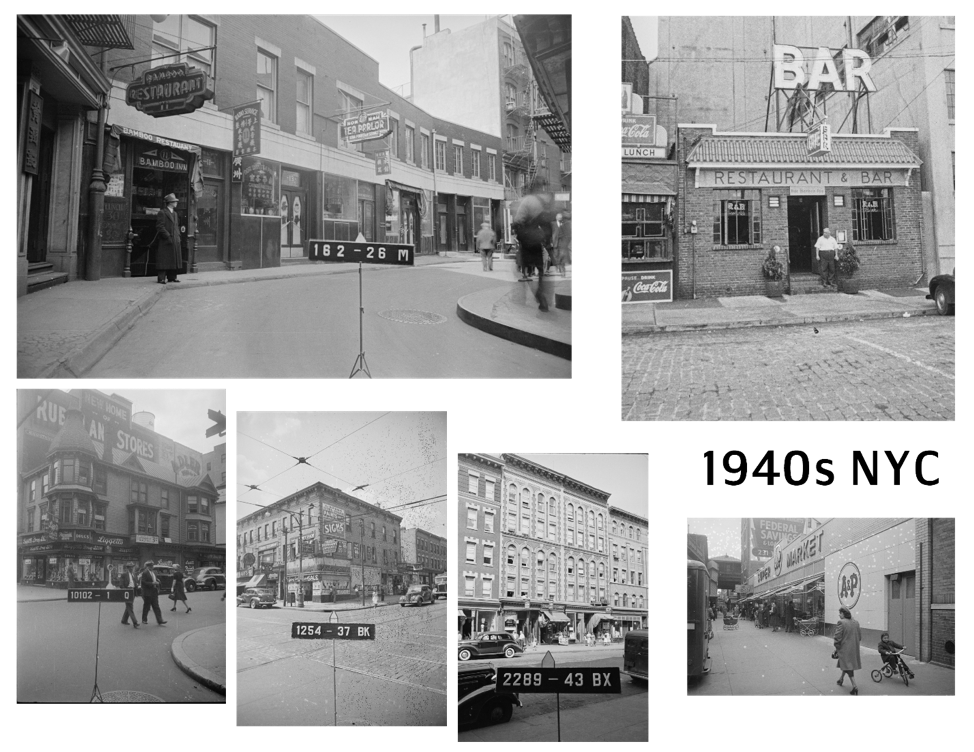|
|
SPOTLIGHT ON:
|
||||
By Christine Bruzzese, Director, Municipal Library |
||||
|
The month of June is celebrated as Lesbian, Gay, Bisexual and Transgender Pride Month since 2000. June was chosen because the Stonewall Inn Riots in New York City began on June 28, 1969. This event is considered by many the beginning of the fight for LGBT rights. To commemorate LGBT pride and the fiftieth anniversary of Stonewall, this article presents some resources from the Municipal Library collection. Also note that in this fiftieth anniversary year, the World Pride celebration will take place in New York City. From the vertical files: a 1981 minority report from the City Council Committee on General Welfare asking fellow Council members to reconsider opposition to passing a gay rights anti-discrimination bill. The bill was finally passed by the City Council on March 20, 1986.
Local Law 2 of 1986 forbidding discrimination against sexual orientation
Report from the New York City Commission on Human Rights dated June 1991: “End the Hate: a Report on Violence against Gay Men and Lesbians in New York City.”
|
Vertical File feature on Civil Defense |
|
By Christine Bruzzese, Director, Municipal Library |
|
|
Duck and cover drills, bomb shelters, fallout shelter signs—all these and more were part of the civil defense concerns in New York City and the whole country during the Cold War era. Fears of attack by an enemy such as the then -Soviet Union had escalated. The vertical file on civil defense contains some fascinating materials on this subject, generally published from 1941 to 1968. Pictured here is a diagram of an air raid shelter in a private one or two family dwelling:
Circa 1950-51, the Office of Civil Defense published “New York City Civil Defense,” a plan for dealing with possible attacks or invasions. None other than Robert Moses was Construction Coordinator, assisting the Civil Defense office. Here are some photos and text: |
The Lung Block: A New York City Slum & Its Forgotten Italian Immigrant Community |
||
By Valerie Warner Parish, Marketing Consultant |
||
|
In 1933, a bustling Italian community of over 600 families living in Lower East Side tenements was virtually wiped from the map. According to Progressive reformers of the era, this Lung Block – a term coined to designate a place where tuberculosis proliferated – threatened not just its poor immigrant residents, but the city at large. A combination of zealous reformers and sensationalistic journalists formed this misleading narrative, which took hold in the public imagination, ultimately making the block a prime target for real estate redevelopment and gentrification. The story of the block’s history touches on several issues of current concern, including anti-immigrant sentiment, gentrification and the lack of affordable housing. It is the subject of a fascinating exhibit, The Lung Block, which explores the history of immigrant housing and reform efforts in NYC at the start of the 20th century through early records and photographs. Visit the exhibit through August, 2019 at The Municipal Archives at the NYC Department of Records and Information Services, 31 Chambers Street, NYC, free and open to the public Monday, Tuesday, Wednesday and Friday: 9AM to 4:30PM; Thursday: 9AM to 6 PM. Saturday: 9:30AM to 4:30PM on the 2nd and 4th Saturdays of most months.
|
The Municipal Archives Update |
By Sylvia Kollar, Director, Municipal Archives |
|
Archivists and reference staff at the Municipal Archives are thrilled to announce the launch of ArchivesSpace (AS). AS is a tool that will assist research across collections by person, place, subject, or search terms. For the last four years, archivists gathered, organized, and standardized our paper and electronic documentation of the archival collections. Currently, the application is available in our Reading and Reference rooms onsite, and we hope to launch an external site in the next year. We’ve also been very busy preparing our off-site collections for a relocation to a temperature- and humidity-controlled space in Industry City, Sunset Park, Brooklyn. The new space will include a reference and research room for the public and a gallery showcasing some of our object collections. Access to our collections is growing in other ways too! With funding from a Local Government Records Improvement Fund (LGRMIF) grant, our A/V archivist is digitizing NYPD surveillance film documenting an important time in NYC history from 1960-1980. We are also preserving and describing the Department of Buildings’ architectural drawings and reproductions of Manhattan buildings. Beginning in 1866, architects and engineers (or all persons) planning to construct a new building or alter an existing one were required to submit an application, including plans, to the newly created Buildings Department. Applicants then had to receive approval before commencing the proposed work. The collection of plans includes sections, elevations, floor plans, and details, as well as engineering and structural diagrams, as appropriate, of all buildings on 965 blocks of Lower Manhattan (from the Battery to 34th Street). |
Monthly Conservation Update |
By Lindsey Hobbs, Head of Conservation, Preservation |
|
Several Conservation staff members recently attended the American Institute for Conservation’s annual meeting, which this year was held in Uncasville, Connecticut. In stark contrast to the casino hotel venue, where other guests were enthralled by slot machines and blackjack table; around 1500 conservators from every specialization – art, books, paper, objects, electronic media, etc. – spent three days learning about and presenting on recent developments and research on the conservation of cultural heritage. The theme this year was “New Tools, Techniques, and Tactics in Conservation and Collection Care.” Naturally, Archives’ staff primarily attended the book and paper sessions. In one particularly interesting track, presenters shared recent research and tips on the use of plant-based gels in treating foxing stains – those rust-colored specks that often appear on certain types of paper – “washing” paper with gels to remove harmful degradation products, and light-bleaching discolored paper using gels and natural or artificial sunlight. The use of gels is a relatively new technique in paper conservation, thus this series was a particular crowd-pleaser. Other sessions focused on workflow strategies for rebinding large volumes, techniques in Japanese and Chinese paper conservation that Western conservators can learn from, and a wide variety of other subjects. In addition to offering a good opportunity to catch up with others in the field, the annual meeting is also the best way to stay up to date on innovations and new research through talks, workshops, poster-sessions, and vendor booths. We’re looking forward to doing it all again next year – this time in Salt Lake City. |
Agency wide Upgrade to Microsoft Windows 10 |
By Praveen Panchal, CIO |
|
Microsoft has announced that it is ending technical assistance and security updates for Windows 7 on Jan. 14, 2020. After that, if we're still running Windows 7 - the outdated operating system, we'll open up the agency to hacks, malware, viruses and other potential future security vulnerabilities. Windows 10 offers many safeguards against such vulnerabilities and is the most stable and secure version of Windows that's ever been released. Besides speed, tile-based apps, touch screen support and a better browser, the security is the major driver for upgrading to Windows 10. It has built-in feature to thwart ransomware from locking up your work and personal documents on your computer and comes with a tool which scans for, quarantines and removes malware. In addition to ransomware protection, it also includes other tools that can be used to stop zero-day attacks, to block and quarantine malicious programs on your computer or office network, and to isolate infected computers on our network. The IT department will be upgrading all computers across agency to Widows 10 in coming months. This includes computers in our public Reading and Reference Rooms. We have placed a Windows 10 computer with instructions on each floor for staff to get familiarized with the new operating system. With this upgrade, we expect to provide the latest and best technology to patrons using the computers in the public research and reference rooms. It will help enrich the research experience and provide additional safeguards for the public users. |

